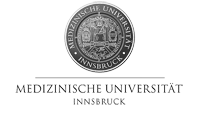|
|
 |
1 Pediatric Dpt. University Hospital Motol, Prague, Czech Republic, 2NICU, University Hospital Motol, Prague, Czech Republic, 3 Faculty of Management and Economics, Czech University of Agriculture, Prague, Czech Republic, 4Gynaecology and Obstetrics Dpt. University Hospital Motol, Prague, Czech Republic, 5Dpt. of Internal Medicine, University Hospital Motol, Prague, Czech Republic, 6 Institute for the Care of Mother and Child, Prague, Czech Republic
Background: Incidence of type 1 diabetes (T1D) is increasing worldwide. The highest increase of T1D incidence in Czech Republic is observed in pre-school age children. For T1D there is still no potent tool to recognise early signs of cellular autoreactivity, which leads to beta cells damage and development of the disease. The naive immune system of the newborn (not yet influenced by external factors) can be used as an important model for studies of the pathogenesis of T1D.
The aim of the study: is to study the response of cord blood mononuclear cells to diabetogenic autoantigen stimulation in babies with increased risk of developing T1D by protein microarray.
Methods: Cord blood
samples of 22 healthy children (mean gestational age 37+6) born to a
diabetic mother (marked as relatives) and 15 newborns with no family history
of any autoimmune disease (controls, 38+1) were collected. Diabetes
compensation of mothers was without problems (mean of their last GHBC was
5%).
Production of 23 cytokines and chemokines (including all important Th1-,
Th2- and Th3- cytokines) by cord blood mononuclear cells were detected.
Production of cytokines and chemokines, pre- and post stimulation with a
mixture of diabetogenic autoantigens (including GAD65, IA2 and proinsulin
derived synthetic peptides), was compared by protein microarray and ELISA.
Results: Higher basal as well as autoantigen induced production of GMCSF, GRO, GRO-alpha, IL-3, -7, -8, -15, MCP-2, MCP-3, MIG and RANTES were observed in the control group (at least p=0.05). The most evident differences between risk newborns and controls were observed in secretion of MCP-2 (p=0.009) and GCSF (p= 0.03) by autoantigen stimulation after subtraction of basal secretion.
Conclusion: Basal as well as stimulated cytokine and chemokine production differed between groups of newborns with and without family history of T1D. Neonates with family history of T1D showed in general a lower overall cytokine and chemokine production. This may indicate a less mature immune responsiveness in neonates with increased risk for T1D.
This project was supported by Research plan FNM 00064203-6207.
